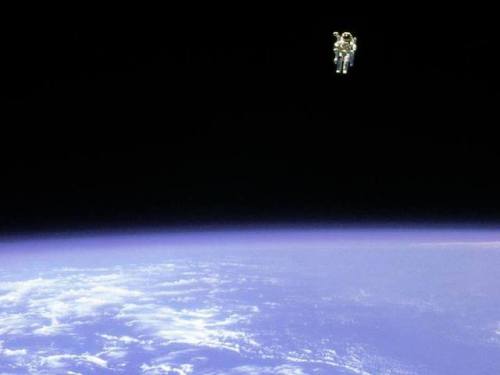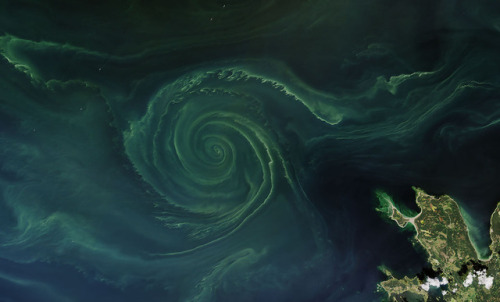A Shark On A Reef Is A Definite Sign That The Reef Is Healthy! Years Ago People Were Terrified If The

A shark on a reef is a definite sign that the reef is healthy! Years ago people were terrified if the saw a shark, now were horrified that we may not see sharks on the reef or anywhere, because we have killed over 90% in the last 50 years. We must end to this needless slaughter! Sharks are essential to keeping our oceans healthy and in balance! The oceans are the heart of our planet! Over 50% of the air we breath and 70% of the protein we eat comes from the ocean. Without our the ocean all life on this planet will die. Please be the change the world needs to survive!
Best immediate way to save sharks here in the US…Support Oceanas Shark Fin Trade Ban! Please sign, share the petition and support this effort! https://www.change.org/p/congress-ban-the-trade-of-shark-fins-in-the-u-s - #regrann (at Tiger Beach)
More Posts from Simplyphytoplankton and Others

EXPLAINED WHY WHALE SHARKS CONGREGATE IN JUST 20 LOCALITIES WORLDWIDE
We know whale sharks (Rhincodon typus), the biggest fish in the world, aggregate at just 20 coastal locations globally. Why these animals, which can reach more than 18 m in length, choose these specific places, has perplexed researchers and conservationists. Although whale-shark aggregations had been recorded near tropics, including Mozambique, the Maldives, Honduras, Australia and others places, what causes these aggregations remain unknow.
Aggregations typically occur in the fore reef and lagoon areas, leading out to the reef slope, reef wall or continental slope, which has a steeper slope, leading whale sharks to deep-sea environment. Researchers sugests whale shark can filter food at greath depths, where the water is cold, and then bask in the sun at shallow depths, warming their cold-blooded bodies, as they depend on external sources of body heat.

- Location of aggregation and non-aggregation sites. Hotspots are in red.
These places are very productive, where plankton and small crustaceans abound. However, sharks swimming in shallow waters near the surface are vulnerable to accidents caused by vessels, as tourist boats which approaches them. The whale shark is considered Vulnerable on the IUCN Red List, these findings increase our understanding of whale shark behaviour and may help guide the identification and conservation of further aggregation sites.
Photo by Abe Khao Lak
Copping et al., 2018. Does bathymetry drive coastal whale shark (Rhincodon typus) aggregations? Aquatic Biology section

What a Nut!— Invasive Species Week
This ctenophore (a stingless jellyfish-like animal) called a sea walnut is native to the east coast of North and South America. In 1982, it was discovered in the Black Sea, where it was transported by ballast water. It subsequently spread to the Caspian Sea. In both places, it multiplied and formed immense populations. The sea walnuts contributed to the collapse of local fisheries because they feed on zooplankton that the commercial fish also consume. Mnemiopsis leidy has also been discovered in the Mediterranean, Baltic, and North Seas.
Photo Credit: Marco Faasse, World Register of Marine Species
Meet MBARI: This team develops innovative new technology to map the seafloor 🤖🗺️
With marine life and ecosystems facing a rising tide of threats, the ocean exploration community needs nimble, cost-effective tools for measuring and monitoring ocean health. MBARI’s Control, Modeling, and Perception of Autonomous Systems Laboratory, known as the CoMPAS Lab is up to the challenge.
MBARI scientists and engineers build and adapt advanced technology that enhances ocean data collection. Led by engineer Giancarlo Troni, the CoMPAS Lab team develops scalable marine technology that can easily be modified for use in a wide variety of vehicles and platforms.

Working with other teams across MBARI, the CoMPAS Lab leverages vehicles like the MiniROV to deploy and test new tools in Monterey Bay's submarine canyon and then adapt them for other mobile platforms. By sharing open-source design specifications and advanced algorithms with the wider ocean exploration community, we hope to expand access to MBARI’s engineering innovations.
MBARI technology is transforming what we know about the ocean and its inhabitants. Our scientists, engineers, and marine operations staff work together to create innovative tools for a more sustainable future where autonomous robots and artificial intelligence can track ocean health in real time and help us visualize ocean animals and environments. Studying our blue backyard is revealing our connection to the ocean—how it sustains us and how our actions on land may be threatening its future.

We’re spotlighting various teams at MBARI to showcase the different ways we’re studying the largest environment on Earth. We hope this series inspires a new generation of ocean explorers. Dive in.





When wood turns into glitter
Many moons ago, in the area that is now Nevada ancient woodlands were living through events that would result in some stunning pieces that grace museums around the world. Some 14 million years ago in the Miocene, the area was thickly forested rather than displaying the arid environment of today. It was also much closer to sea level, since the area has been extensively uplifted since then, due to tectonic stresses caused by the subduction of the Pacific and Farallon plates under the North American one. The area also saw intense subduction related volcanism (ongoing along the USA’s west coast to this day), which periodically covered the forests in silica rich ash. As groundwater interacted with the magma below, weathering the layers of ash into clays, it dissolved silica, precipitating it when conditions such as temperature and pressure changed, replacing the ash covered trees with opal, sometimes so clearly that every cell is visible. While not really suitable for jewellery use due to its tendency to crack as it dries out (called crazing in the trade), these rare logs from the Virgin Valley of Nevada make for stunning collector’s specimens
Keep reading

Ocean heat waves increasing
This is a map showing a huge pool of warm surface water that formed in the North Pacific Ocean from 2013-2015. This pool of warm water was so stagnant that many weather scientists and forecasters casually started referring to it as “The Blob”, and it took the monster 2016 El Niño event to force the extra warm water to disperse. This huge pool of warm water likely contributed to some of the extreme weather events that hit North America in that timespan, as there was nothing like it in the North Pacific Ocean in the available weather records. Although this event was unprecedented in this location, newly available science shows that this type of event is happening with increasing frequency around the world as a result of the warming triggered by human release of greenhouse gases.
Keep reading

Meet Bruce McCandless. He was a bit of a bad-ass. In 1984, Bruce was aboard the Challenger Space Shuttle and became the first human to walk in space without a safety line. By utilising a nitrogen propelled Manned Maneuvering Unit (MMU), he stepped free from Challenger into the blackness of space for a 90-minute space walk and wandered as far as 97 meters from the ship. The result is this amazing image which captures ingenuity, innovation and most certainly bravery.
Bruce McCandless died yesterday at the age of 80.
-Jean Image Credit: NASA

This may look like a beautiful flower blooming beneath the waves, but it’s actually an animal!
This stalked crinoid was spotted in the deep waters of National Marine Sanctuary of American Samoa. The feathery “petals” you see are arms, which this invertebrate uses to grasp small particles of food out of the current. Crinoids can also use these arms to crawl along the seafloor if they need to relocate!
(Photo: NOAA Office of Ocean Exploration and Research, 2017 American Samoa)
A mariachi band playing at my host dad’s mom’s 86th birthday party.

The Great Escape!
One of the biggest threats to sea turtles, such as the loggerhead turtle (Caretta caretta) pictured here, is being accidentally caught and killed in fishing nets. Trapped in a net, the turtles are dragged through the water with no access to the surface to breathe, causing them to drown.
To address this problem, NOAA Fisheries worked with the shrimp trawling industry to install escape hatches into their nets called Turtle Excluder Devices, or TEDs. A crosshatch of bars in the middle of the net create a grid large enough for small shrimp to pass through, but not turtles and other large animals. When they hit the grid, they can then swim out through a hole in the net and escape.
Before TEDs were installed, an estimated 70 to 80 percent of turtle strandings on beaches were caused by shrimp nets. But since they were installed by U.S. shrimpers in the Gulf of Mexico in the late 1980s, strandings caused by shrimp nets are estimated to be down by at least 44 percent.
Photo: NOAA

Blooms in the Baltic
Every summer, phytoplankton – microscopic plant-like organisms – spread across the North Atlantic, with blooms spanning hundreds and sometimes thousands of miles. Nutrient-rich, cooler waters tend to promote more growth among marine plants and phytoplankton than is found in tropical waters. Blooms this summer off Scandinavia seem to be particularly intense.
On July 18, 2018, the Operational Land Imager (OLI) on Landsat 8 acquired a natural-color image of a swirling green phytoplankton bloom in the Gulf of Finland, a section of the Baltic Sea. Note how the phytoplankton trace the edges of a vortex; it is possible that this ocean eddy is pumping up nutrients from the depths.
Though it is impossible to know the phytoplankton type without sampling the water, three decades of satellite observations suggest that these green blooms are likely to be cyanobacteria (blue-green algae), an ancient type of marine bacteria that capture and store solar energy through photosynthesis (like plants).
In recent years, the proliferation of algae blooms in the Baltic Sea has led to the regular appearance of “dead zones” in the basin. Phytoplankton and cyanobacteria consume the abundant nutrients in the Baltic ¬and deplete the oxygen. According to researchers from Finland’s University of Turku, the dead zone this year is estimated to span about 70,000 square kilometers (27,000 square miles).
Read more: https://go.nasa.gov/2uLK4aZ
Make sure to follow us on Tumblr for your regular dose of space: http://nasa.tumblr.com.
-
 simplyphytoplankton reblogged this · 6 years ago
simplyphytoplankton reblogged this · 6 years ago -
 simplyphytoplankton liked this · 6 years ago
simplyphytoplankton liked this · 6 years ago -
 the-tide-is-out reblogged this · 6 years ago
the-tide-is-out reblogged this · 6 years ago -
 wrasse72 liked this · 6 years ago
wrasse72 liked this · 6 years ago -
 katzensprotte liked this · 6 years ago
katzensprotte liked this · 6 years ago -
 myownhellscape liked this · 6 years ago
myownhellscape liked this · 6 years ago -
 jimabernethy reblogged this · 6 years ago
jimabernethy reblogged this · 6 years ago

Blog dedicted to phytoplankton. Phytoplankton are microscopic organisms that are responsible for half of the photosynthesis that occurs on Earth. Oh, and they look like art... Follow to learn more about these amazing litter critters! Caution: Will share other ocean science posts!Run by an oceanographer and phytoplankton expert. Currently a postdoctoral researcher.Profile image: False Colored SEM image of Emiliania huxleyi, a coccolithophore, and the subject of my doctoral work. Credit: Steve Gschmeissner/ Science Photo Library/ Getty ImagesHeader image: Satellite image of a phytoplankton bloom off the Alaskan Coast, in the Chukchi SeaCredit: NASA image by Norman Kuring/NASA's Ocean Color Web https://earthobservatory.nasa.gov/images/92412/churning-in-the-chukchi-sea
158 posts